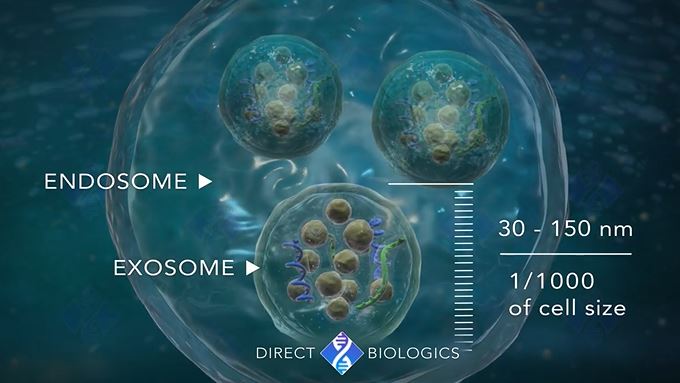How might Exosomes hair loss therapy work?
Hair follicles have mature stem cells called HFSCs (hair follicle stem cells) and dermal papilla cells (DPCs). Alopecia (or hair loss) involves changes to the two types of cells. Interestingly, the surrounding tissue can influence hair cells as well, for example, fat surrounding hair tends to support hair growth more than fat from other areas of the body (like the abdomen for example). Injections of Exosomes into this fatty layer of the scalp has been found to affect these cell and accelerate hair to return to the anagen phase or growing phase. But we still don’t know how much of an impact these will have on each patient.
*Individual results may vary.
Exosomes Update:
Exosomes are signaling molecules in the shape of tiny balloons known as “vesicles”. The vesicle cells send information to each other containing something that they want to communicate, like “grow” or “divide” etc. These tiny particles contain various growth factors. They are collected from Stem Cells in a process that is FDA registered and inspected, and can be used for purposes ranging from healing and repair, to reducing inflammation and improving blood flow.
 Science shows us a revolutionary way to provide extracellular vesicle therapy which is to provide therapy to the patient's own cells by modulating the cellular activity.
Science shows us a revolutionary way to provide extracellular vesicle therapy which is to provide therapy to the patient's own cells by modulating the cellular activity.
This happens by introducing the patient's cells to a healthy and younger combination of naturally occurring growth factor proteins and exosomes. A growth factor is naturally occurring protein capable of stimulating cellular growth, proliferation, healing, and cellular differentiation. Usually, it is a protein or a steroid hormone. Growth factors are important for regulating a variety of cellular processes.
Inside the cell, a cell membrane forms inward forming a special type of lipid vesicle called an endosome.
Then the proteins, microRNA and messenger RNA invaginate the endosome's membrane forming the exosomes.
Endosomes then fuse with the surface of the cell, releasing the exosomes outside of the cell. Due to the observation of this process, historically, exosomes were believed to be a waste by-product of cells but when researched further and it was discovered that, in fact, these are the mediating mechanism involved in direct cell-to-cell communication.
These produce an anti-inflammatory response due to the communication from the many proteins that down-regulate inflammatory proteins.
Other proteins will then recruit stem cells to the area that will help un-regulate these cells to proliferate and promote organized healing through the regulated process. Then once the task is complete, there are additional proteins that tell the cells when the healing has been completed. These exosomes, with the presence of over a 1000+ growth factors, are being regarded as one of the purest forms of cellular therapy.*
In their natural state, they offer proteins and no DNA or potentially harmful by-products that can be found in other therapies.
*Individual results may vary.
